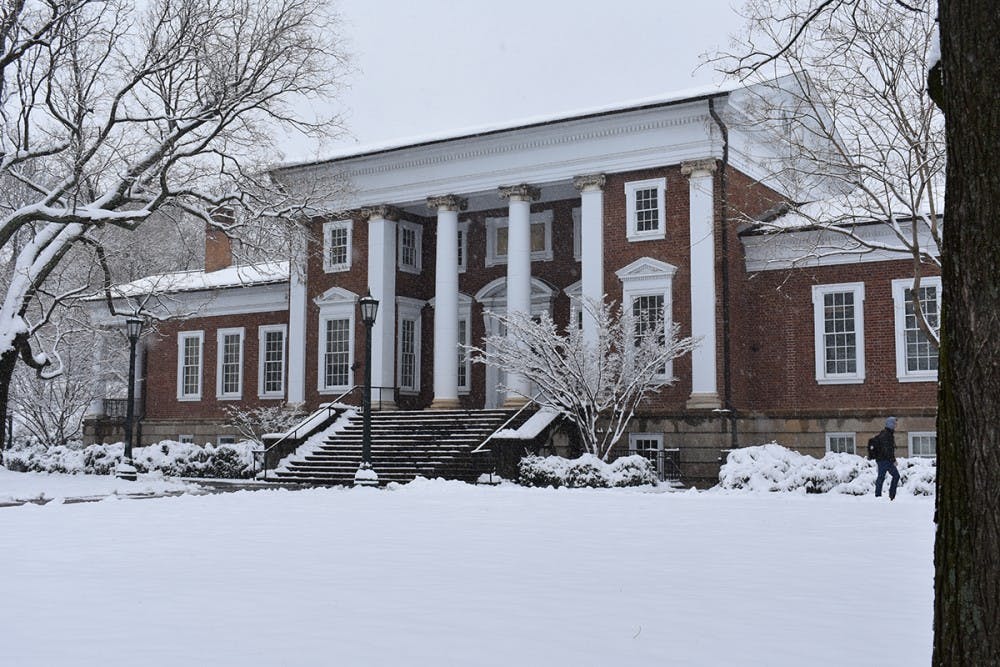Last year, Student Council organized Diversity Week to celebrate the diversity present throughout the University. While it is nice to acknowledge diversity at the University, we should be focusing more on expanding it. The Council should consider having a Diversity Week which is refocused on not only celebrating diversity, but raising awareness about the lack thereof. The University is lacking in diversity relative to the diverse world in which we live. While the University has taken steps to try and increase diversity, more action is necessary.
The University became involved in a program called QuestBridge eight years ago to increase the racial and socioeconomic diversity on Grounds. The chosen finalists receive generous amounts of financial aid from the college or university with whom they are matched. QuestBridge finalists demonstrate a diverse makeup of different racial and socioeconomic backgrounds. The program helps universities find academically gifted students who would otherwise be unable to attend a four-year university due to their financial circumstances.
In addition, the University is one of only two public universities in the country to have need-blind admissions in conjunction with a policy that meets full demonstrated financial need. This admission process helps to draw students to apply to the University, who are in financial need and from different racial backgrounds. The need-blind admission process, and becoming partners with the QuestBridge program, are steps in the right direction. The University must not stop here, but also look into advancing new programs to foster more diversity on Grounds.
These programs and policies are not enough. UVA Today published an article last November celebrating the growth of diversity at the University. The article claims, “African-American enrollment of first-year students has increased by 41.5 percent,” and then proceeds to tout that the amount of enrolled students who claim two or more races, one of those being African-American, has increased “7.1 percent in 2012 to 9.1 percent in 2017” a whole two percent in the span of five years.
Although the total number of African-Americans enrolled as undergraduates has increased, the University’s Diversity Dashboard shows a decrease in the share of African-Americans among undergraduate students from 8.39 percent in 2009 to 6.54 percent in 2017. Hopefully, as the statistics for regular decisions come out soon we will see more growth in diversity among the incoming class. The article also highlights programs such as the University’s “Hispanic-Latinx Peer Mentoring Program and Peer Advising Family Network [that] provide peer-to-peer mentoring opportunities to students who identify as Hispanic and Asian.”
While these programs are very helpful for minority students to become part of a close community at the University, they do not promote interracial interactions on Grounds. In addition to these programs, the University should be implementing interracial programs that help undergraduates integrate themselves among peers who do not share their racial background.
In addition, the University should look into programs like No Barriers, implemented at the University of Chicago. The program waives the application fee for students applying for financial aid. The program also provides students who have demonstrated financial need with grants instead of loans, and provides them with internships and career-advisors. Programs like the No Barriers program, make the daunting feat of applying to a primarily white school seem more inviting.
Additionally, a new program has just emerged called Hoos First Look. The program was founded by students Brandon Kim and Marrissa Jones. Hoos First Look is an all-expense paid program that hopes to fly in 20 socioeconomically disadvantaged rising high school juniors to Grounds for a two-night, three-day stay at the University. During their visit, they will be provided with a first hand look at life on Grounds, and they will become more competitive applicants in the admission process. This program will be placed into effect this year due to help from the Office of Undergraduate Admission, the Jefferson Trust and the Parents Fund. Programs like Hoos First Look must be encouraged to expand beyond 20 students and must receive funds and support from the University.
I am hopeful as Student Council welcomes its incoming president Alex Cintron, who is Latinx. Over the coming year, I hope to see Cintron create a more inclusive atmosphere on Grounds. Additionally, as a Latinx student at the University, I feel both proud to be a minority student, and frustrated that our University does not seem to be promoting the scale of diversity necessary to provide an equal opportunity for minorities at a historically-white institution. In a way, the University is trapped in a state of complacency after experiencing a small increase in diversity. The University must continue implementing programs to make Grounds more diverse, and to make the University more welcoming to minority students and those in need of financial assistance.
Izabella Forero is a Viewpoint writer for The Cavalier Daily. She can be reached at opinion@cavalierdaily.com.







